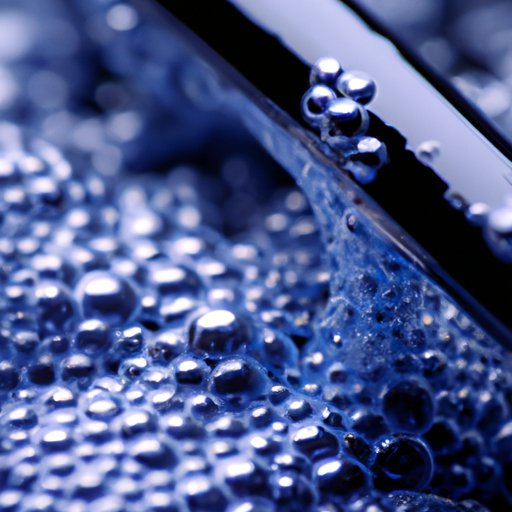
I. Introduction
Cooling agents play a critical role in various applications, from keeping engines from overheating to maintaining comfortable temperatures in buildings. Water, being abundant and readily available, has been a tempting choice for many as a coolant solution. However, the viability and efficiency of water as a cooling agent have been the subject of debates. This article seeks to explore the use of water as a coolant, its advantages, drawbacks, effectiveness, and safety concerns.
II. Water as a Coolant: Advantages and Disadvantages
Water is one of the most cost-effective coolants on the market, owing to its low cost and high heat capacity. It can effectively absorb, conduct, and release heat energy, making it a viable option in many situations. However, water also has some drawbacks, such as its freezing point, corrosiveness, and electrical conductivity. Water can freeze at temperatures below zero degrees Celsius, making it unsuitable for cold and freezing environments. Additionally, water can cause corrosion in metal systems, potentially causing damage. Finally, water’s high electrical conductivity means it can pose risks in electrical systems.
III. Exploring the Viability of Water as an Effective Coolant
Water has been successfully used in various cooling systems, including automotive, HVAC, and electronic devices. However, in many situations, water may not be the best coolant option due to its drawbacks. For example, in automotive systems, the use of water as a coolant may be limited in environments that experience low temperatures. In contrast, in electronic devices, water may not be viable due to its risk of causing electrical shorts.
IV. The Science Behind Water’s Cooling Properties
Water cools a surface by absorbing heat energy from the material to the water’s surface as the water moves across it and then dissipating that heat energy to the environment. The heat transfer efficiency of water depends on factors such as velocity, temperature, and surface area. The specific heat capacity of water plays a significant role in its effectiveness as a coolant, as water can hold more heat energy than many other coolants. Thermal conductivity is also an important factor in water’s cooling properties, as it means water can conduct heat energy effectively.
V. Water vs. Traditional Coolants: Which is More Effective?
Compared to traditional coolants like ethylene glycol and propylene glycol, water is more environmentally friendly, readily available, and more affordable. However, traditional coolants are more effective in very low temperatures and have lower electrical conductivity. The optimal coolant choice depends on the application and the environment where it will be used.
VI. Dangers of Using Water as a Coolant in Certain Industrial Applications
While water is generally safe to use as a coolant, some industrial applications may pose risks. For example, using untreated or contaminated water in cooling systems can lead to corrosion and damage to materials. In other situations, such as electrical equipment or engines, the high electrical conductivity of water can pose hazards.
VII. Why Water May Be a Sustainable and Cost-Effective Cooling Solution
Water is a sustainable coolant solution because it can be reused and recycled in many systems. Additionally, it is readily available and is a more affordable option compared to many traditional coolants. This makes it an attractive choice for many industries and applications.
VIII. How to Properly Use Water as a Cooling Agent: Best Practices and Safety Precautions
While water is generally safe to use as a coolant, it is important to follow some best practices to prevent accidents. Water coolant systems should be regularly maintained with fresh, clean water, free from any impurities or contaminants. Electrical systems should also be kept separated from water, and users should regularly inspect their cooling systems for leaks or other hazards.
IX. Conclusion
Overall, water is an effective and affordable coolant solution for many applications. However, its drawbacks, such as its freezing point and electrical conductivity, make it unsuitable for certain environments and situations. It is crucial to understand the advantages, disadvantages, and best practices when using water as a coolant to make informed decisions that prioritize safety and efficiency.




